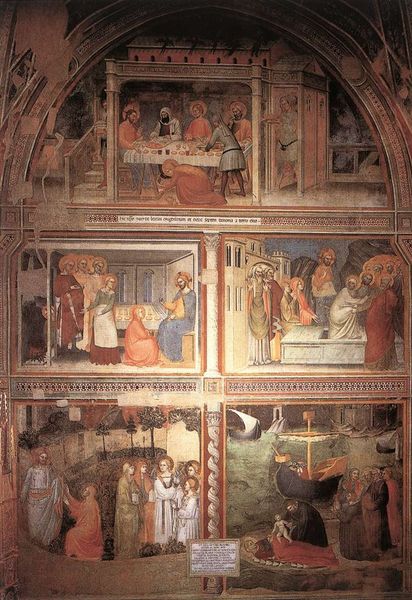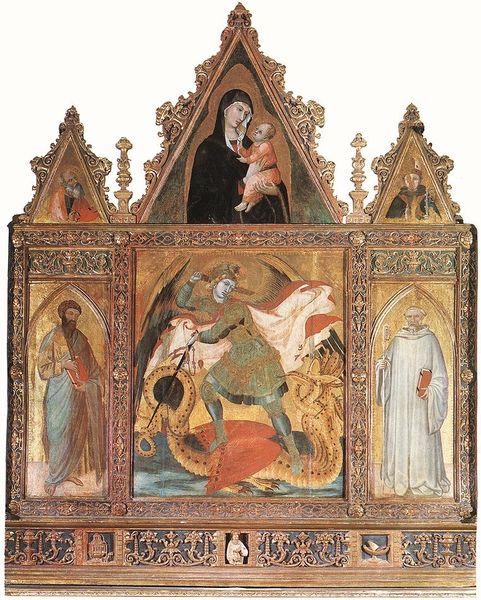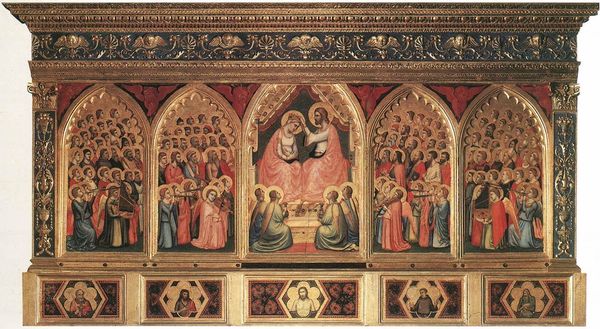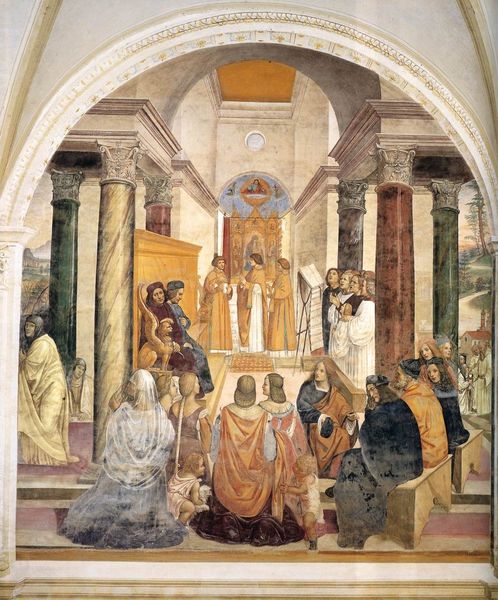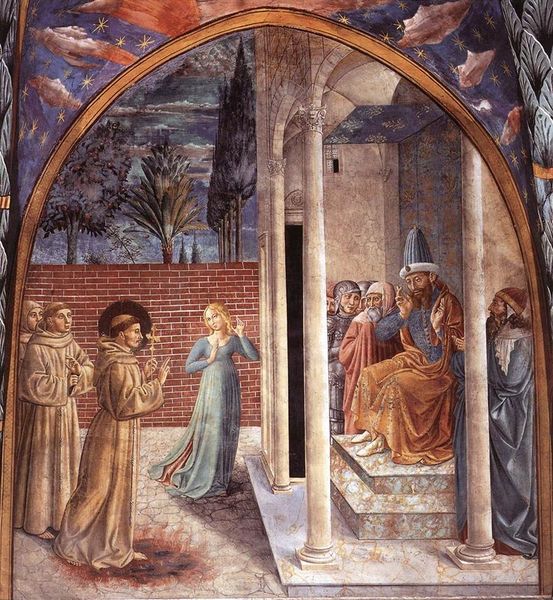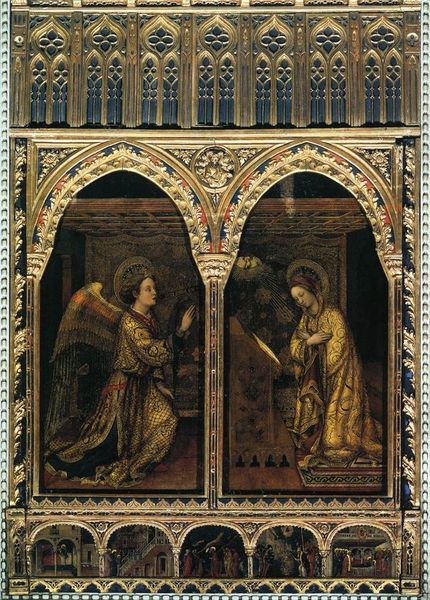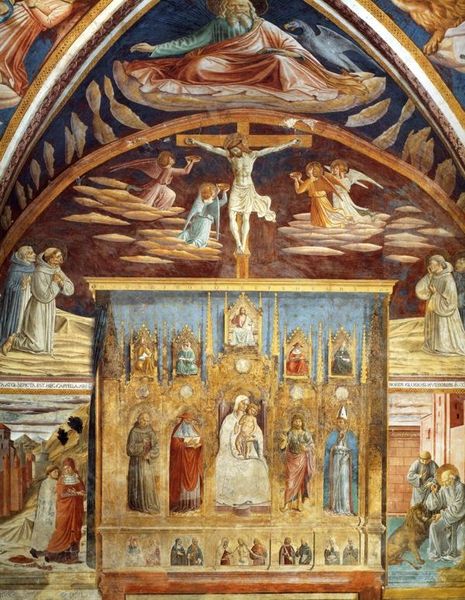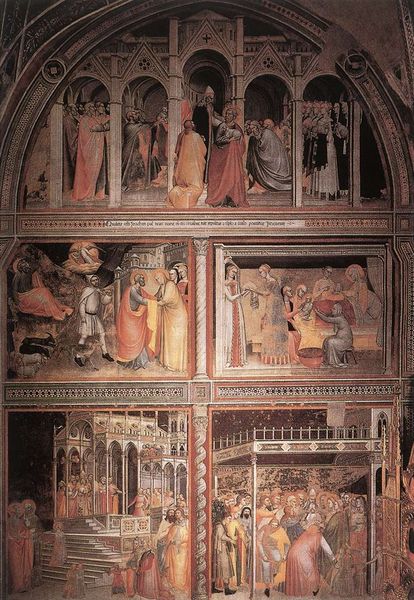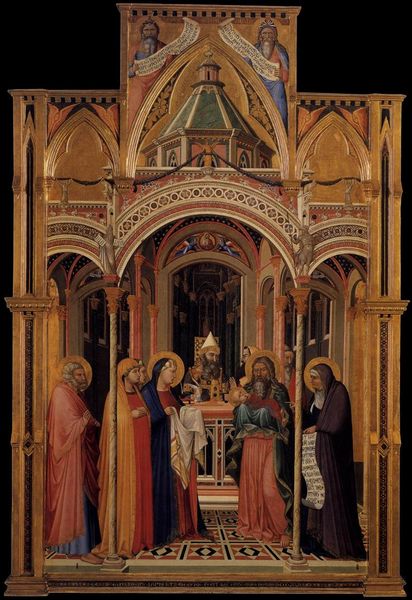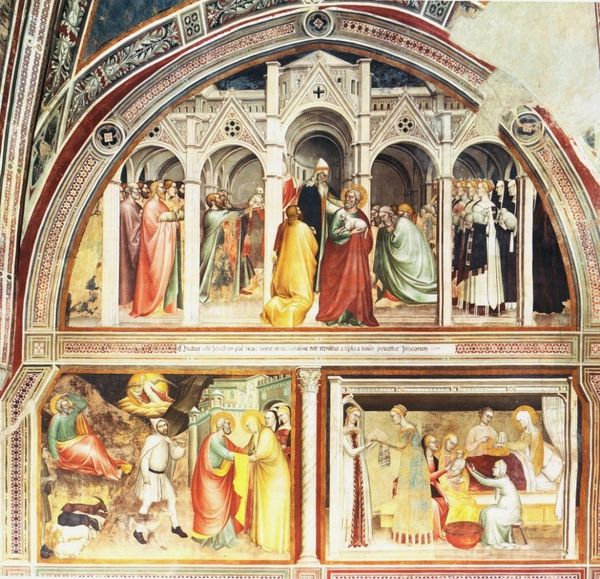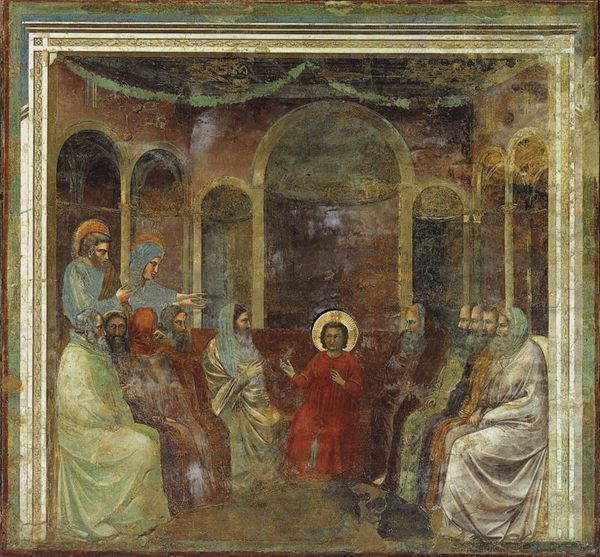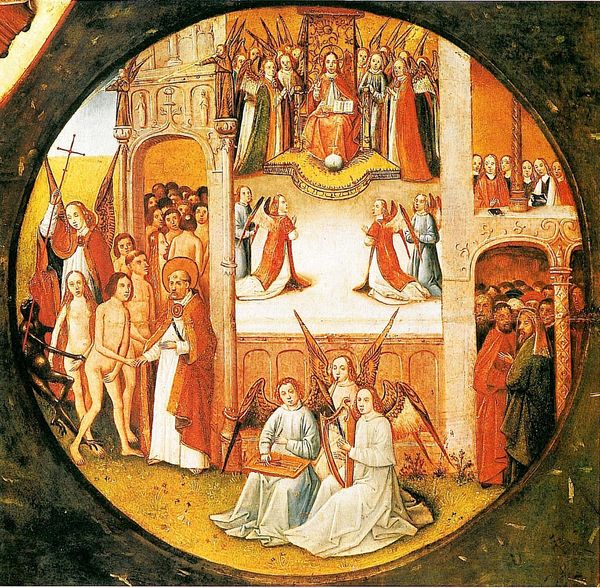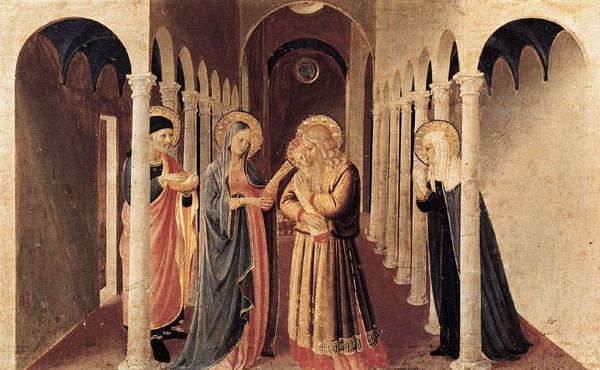
tempera, painting, fresco, architecture
#
portrait
#
medieval
#
narrative-art
#
tempera
#
painting
#
sienese-school
#
figuration
#
fresco
#
traditional architecture
#
oil painting
#
history-painting
#
italian-renaissance
#
architecture
Copyright: Public domain
Ambrogio Lorenzetti painted these scenes of the life of St. Nicholas sometime in the early 14th century in Siena, Italy. As a narrative altarpiece, it was made in a world still shaped by the Black Death and its religious and social upheavals. The painting unfolds in two registers, each offering glimpses into the life of St. Nicholas. But what does it mean to witness these scenes now? We are invited to consider the concept of charity and the role of religious figures in alleviating suffering, amidst a society deeply divided by wealth and poverty. Lorenzetti creates a visual language that oscillates between divine intervention and human agency, prompting viewers to reflect on the complex relationship between faith, action, and social justice. Consider how Lorenzetti uses light and architectural space to highlight the drama and emotional intensity of the episodes from the life of St. Nicholas. The painting's emotional depth invites us to look closely at how the legacies of faith and social action continue to resonate today.
Comments
No comments
Be the first to comment and join the conversation on the ultimate creative platform.
